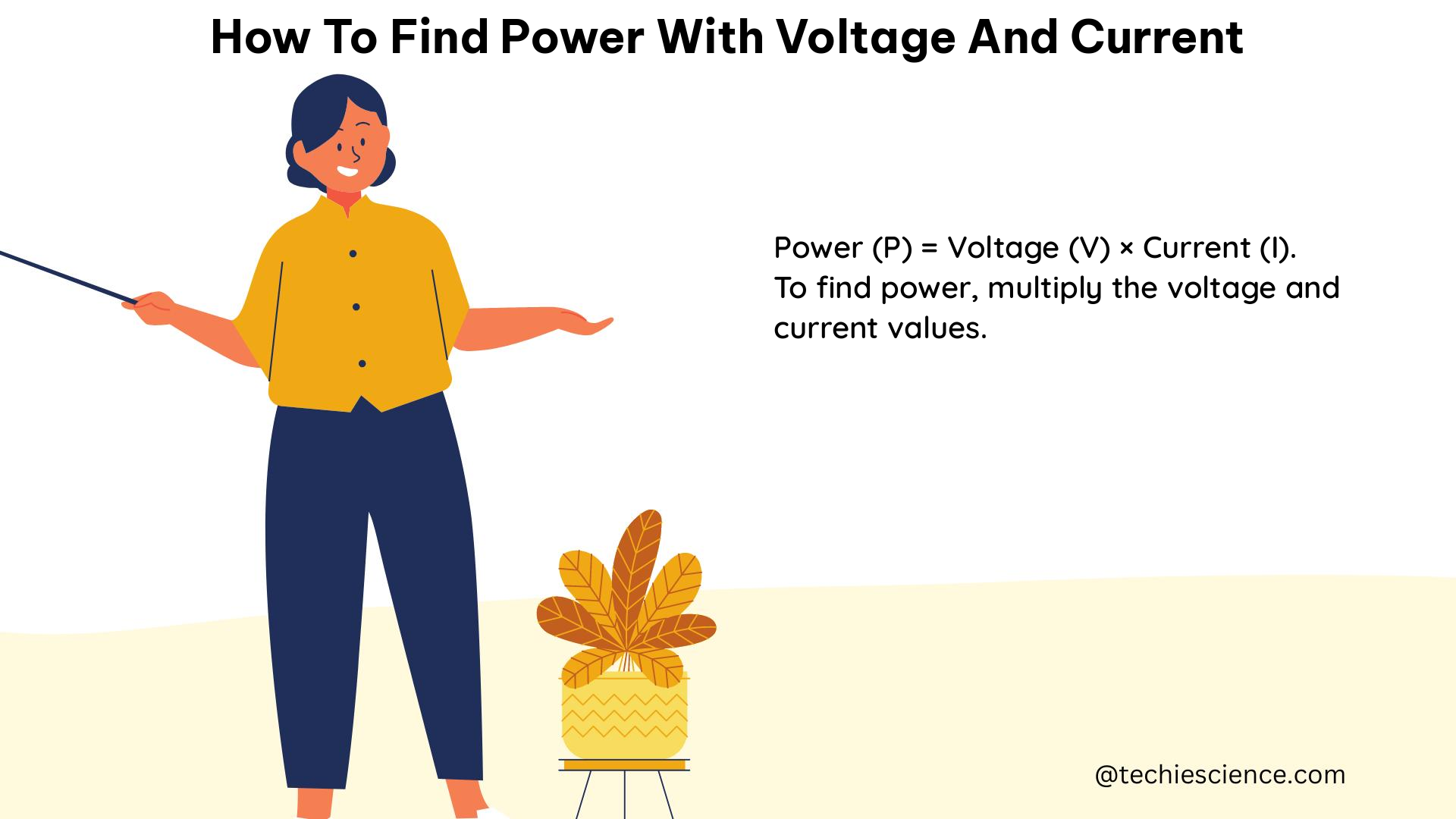In the world of electrical engineering and physics, understanding the relationship between power, voltage, and current is crucial. This comprehensive guide will delve into the intricacies of finding power using voltage and current, providing you with a thorough understanding of the underlying principles, formulas, and practical applications.
The Power Formula: P = IV
The fundamental equation for finding power in an electrical circuit is the power formula, which states that power (P) is equal to the product of current (I) and voltage (V). This formula can be expressed as:
P = IV
Where:
– P is the power in watts (W)
– I is the current in amperes (A)
– V is the voltage in volts (V)
This formula is the cornerstone of understanding the relationship between power, voltage, and current in electrical circuits.
Applying the Power Formula

Let’s consider an example to illustrate the application of the power formula.
Suppose you have a circuit with a voltage of 120 volts and a current of 12 amps. To find the power consumed by this circuit, you can simply plug the values into the power formula:
P = IV
P = 120 volts × 12 amps
P = 1440 watts
This means that the circuit is consuming 1440 watts of power.
It’s important to note that power and current are directly proportional. If the voltage or current in a circuit increases, the power will also increase proportionally. For instance, if the voltage in the above circuit is increased to 140 volts while the current remains at 12 amps, the power would increase to:
P = IV
P = 140 volts × 12 amps
P = 1680 watts
Ohm’s Law and Power Calculation
In addition to the power formula, you can also use Ohm’s law to calculate power. Ohm’s law states that the current through a conductor is directly proportional to the voltage across it, and can be expressed as:
I = V/R
Where:
– I is the current in amperes (A)
– V is the voltage in volts (V)
– R is the resistance in ohms (Ω)
By rearranging the Ohm’s law equation, you can derive the power formula as:
P = IV = I(V/R) = V^2/R
Let’s consider an example using Ohm’s law to calculate power.
Suppose you have a circuit with a voltage of 120 volts and a resistance of 60 ohms. To find the power consumed by this circuit, you can use the power formula derived from Ohm’s law:
P = V^2/R
P = (120 volts)^2 / 60 ohms
P = 240 watts
This means that the circuit is consuming 240 watts of power.
It’s important to note that when using Ohm’s law to calculate power, you need to know the resistance of the circuit. If you don’t know the resistance, you can use the power formula (P = IV) to calculate the power directly from the voltage and current measurements.
Advanced Concepts and Considerations
-
AC and DC Power Calculations: The power formula and Ohm’s law can be applied to both AC (alternating current) and DC (direct current) circuits. However, in AC circuits, the power calculation may involve additional factors, such as power factor, to account for the phase difference between voltage and current.
-
Instantaneous and Average Power: Power can be calculated as instantaneous power (the power at a specific moment in time) or average power (the average power over a period of time). The choice of calculation depends on the application and the nature of the electrical system.
-
Power Measurement Techniques: There are various methods and instruments used to measure power, such as wattmeters, power analyzers, and digital multimeters. The accuracy and precision of these measurements depend on the specific equipment and the measurement conditions.
-
Power Efficiency and Losses: In real-world electrical systems, there are often power losses due to factors such as resistance, heat dissipation, and other inefficiencies. Understanding these losses is crucial for optimizing the performance and efficiency of electrical systems.
-
Power Conversion and Transformation: In many applications, power needs to be converted or transformed from one form to another, such as from AC to DC or from one voltage level to another. The power formula and Ohm’s law can be used to analyze and design these power conversion and transformation circuits.
Conclusion
Understanding how to find power with voltage and current is a fundamental skill in electrical engineering and physics. By mastering the power formula and Ohm’s law, you can accurately calculate the power consumed by electrical circuits, optimize their performance, and design more efficient systems. This comprehensive guide has provided you with the necessary tools and knowledge to tackle power calculations with confidence.
Reference:
- Calculate Current (Amps) with Ohm’s Law and the Power Formula
- How do we compute power from current and voltage samples? Can we quantify its accuracy?
- Measuring Current and Voltage— Calculating Power and Resistance

The lambdageeks.com Core SME Team is a group of experienced subject matter experts from diverse scientific and technical fields including Physics, Chemistry, Technology,Electronics & Electrical Engineering, Automotive, Mechanical Engineering. Our team collaborates to create high-quality, well-researched articles on a wide range of science and technology topics for the lambdageeks.com website.
All Our Senior SME are having more than 7 Years of experience in the respective fields . They are either Working Industry Professionals or assocaited With different Universities. Refer Our Authors Page to get to know About our Core SMEs.